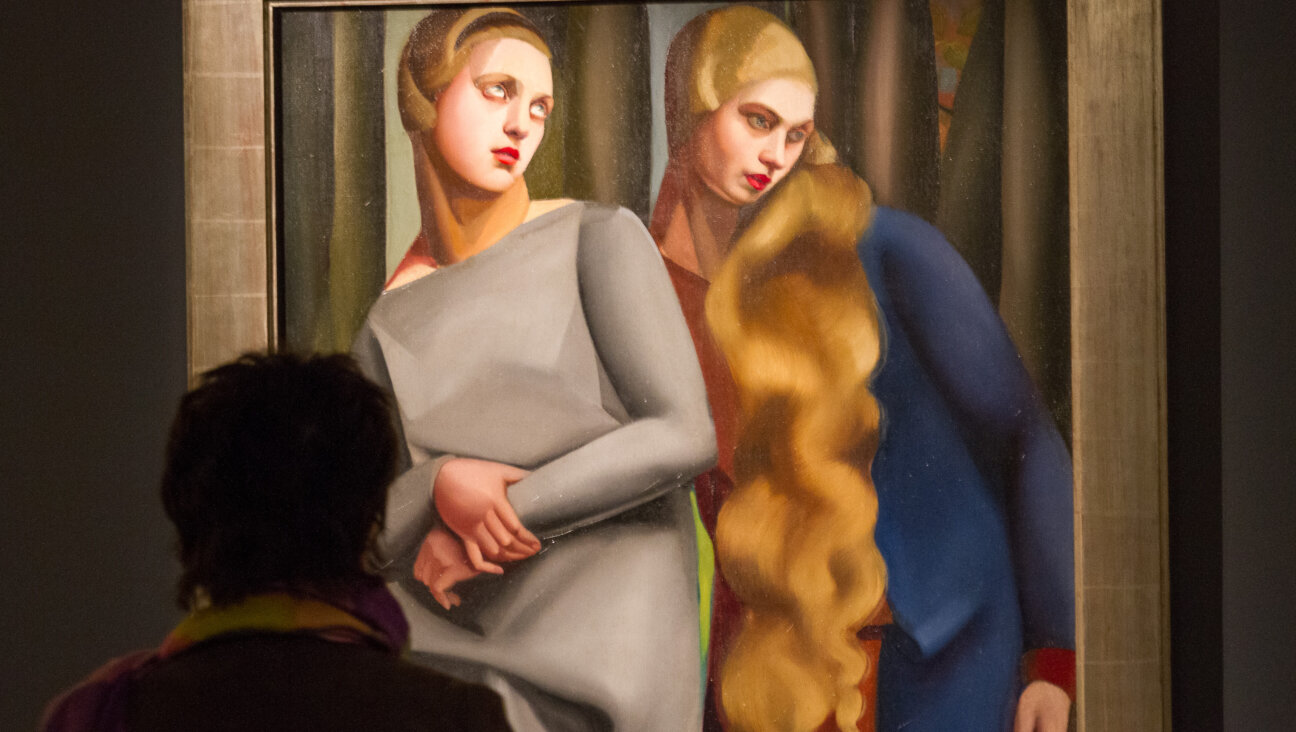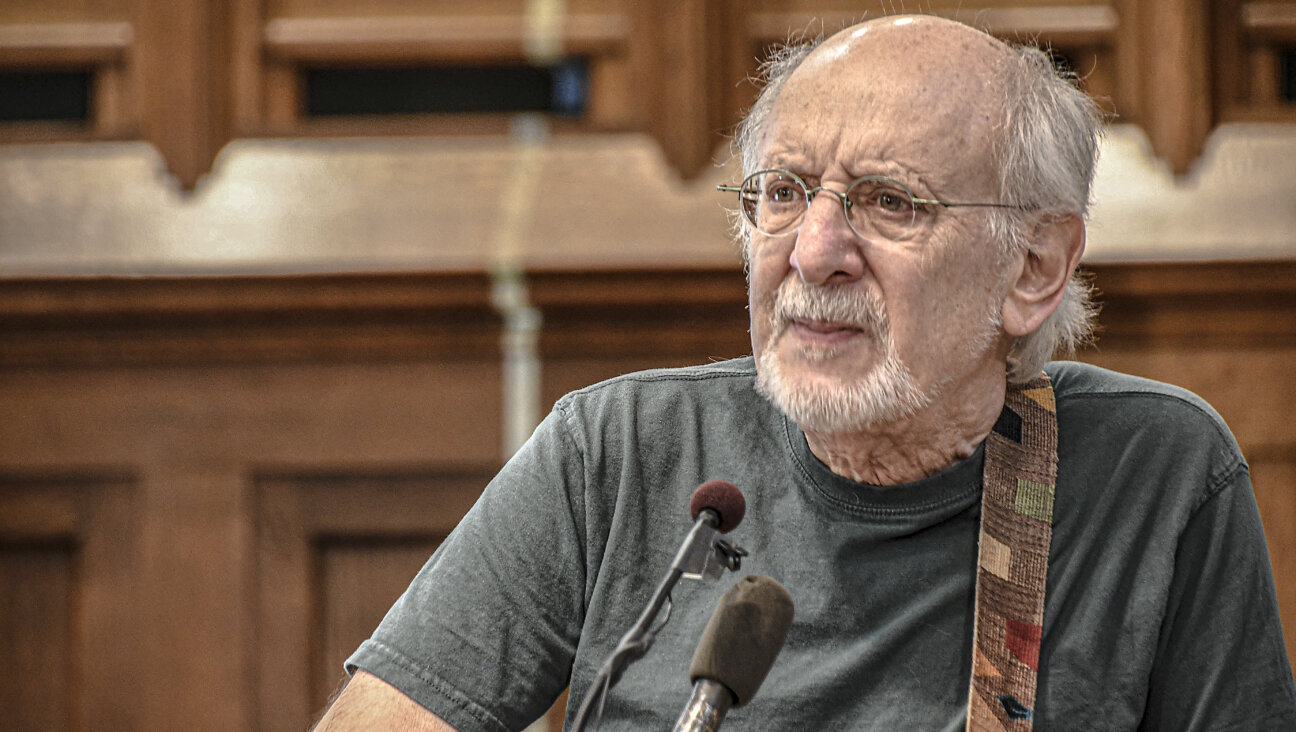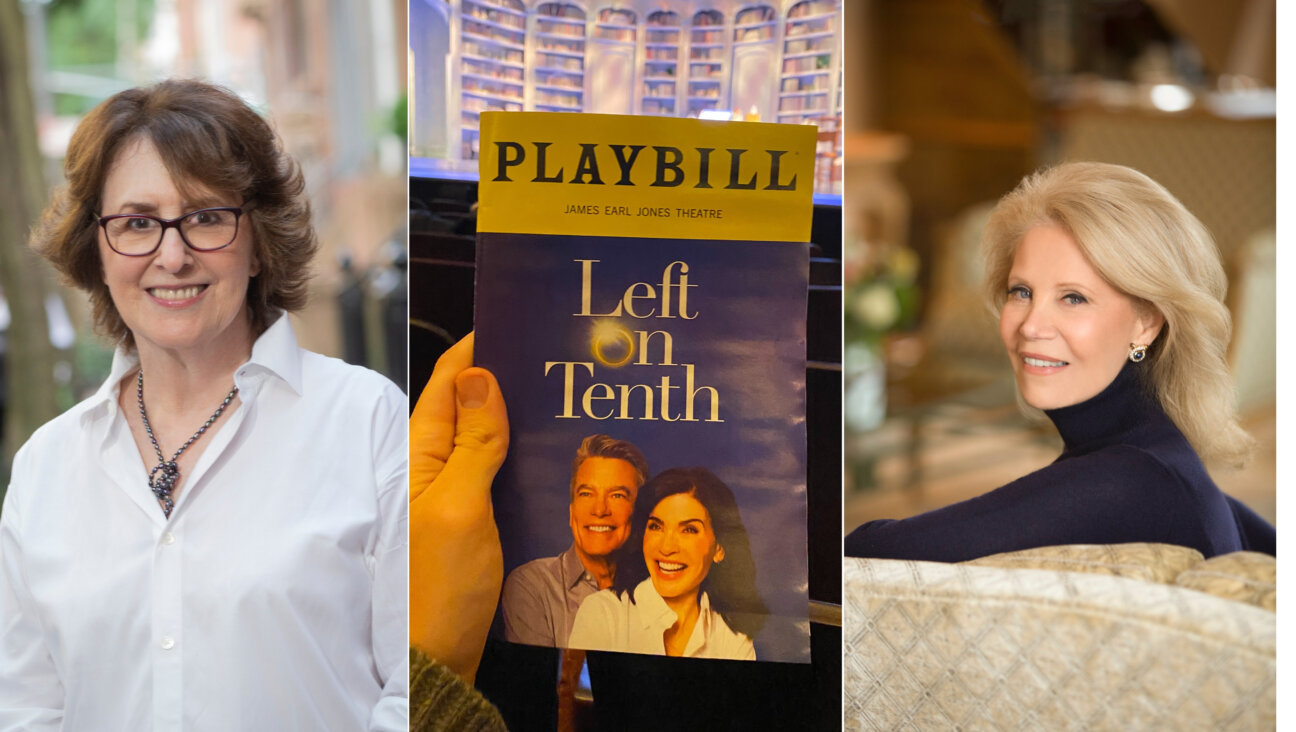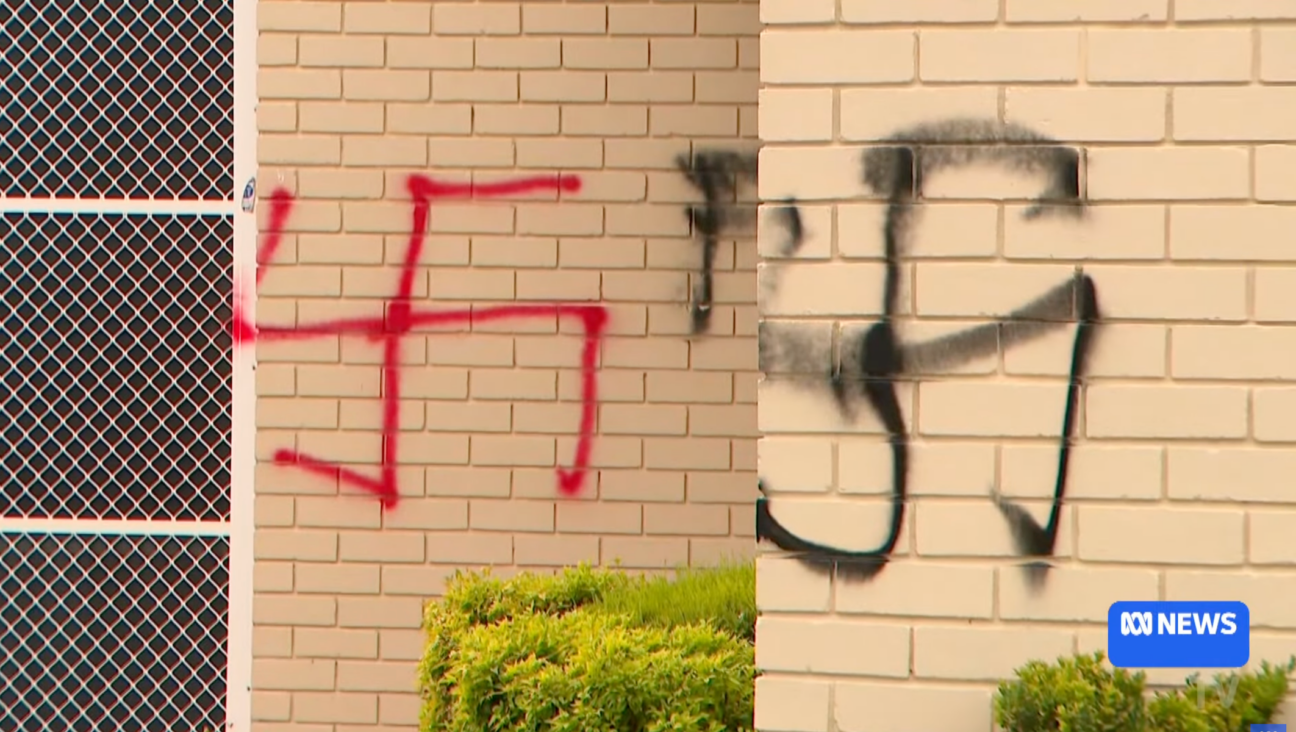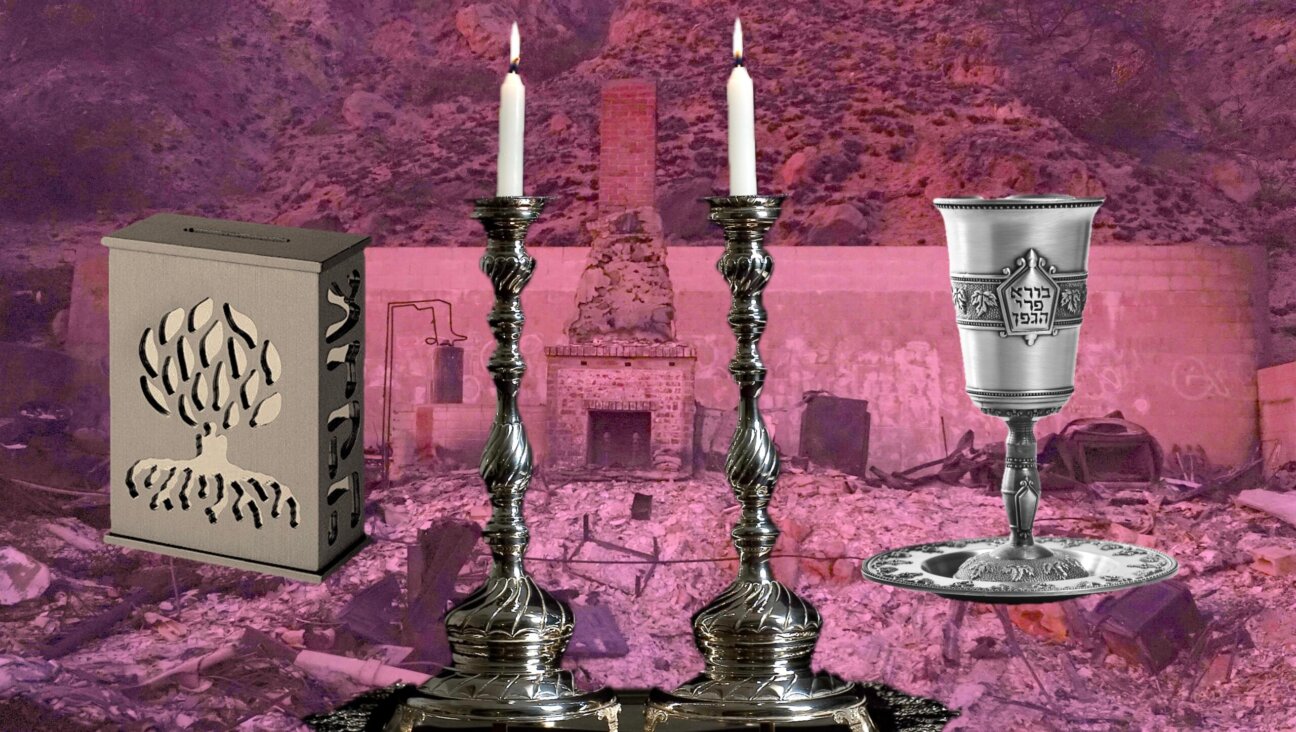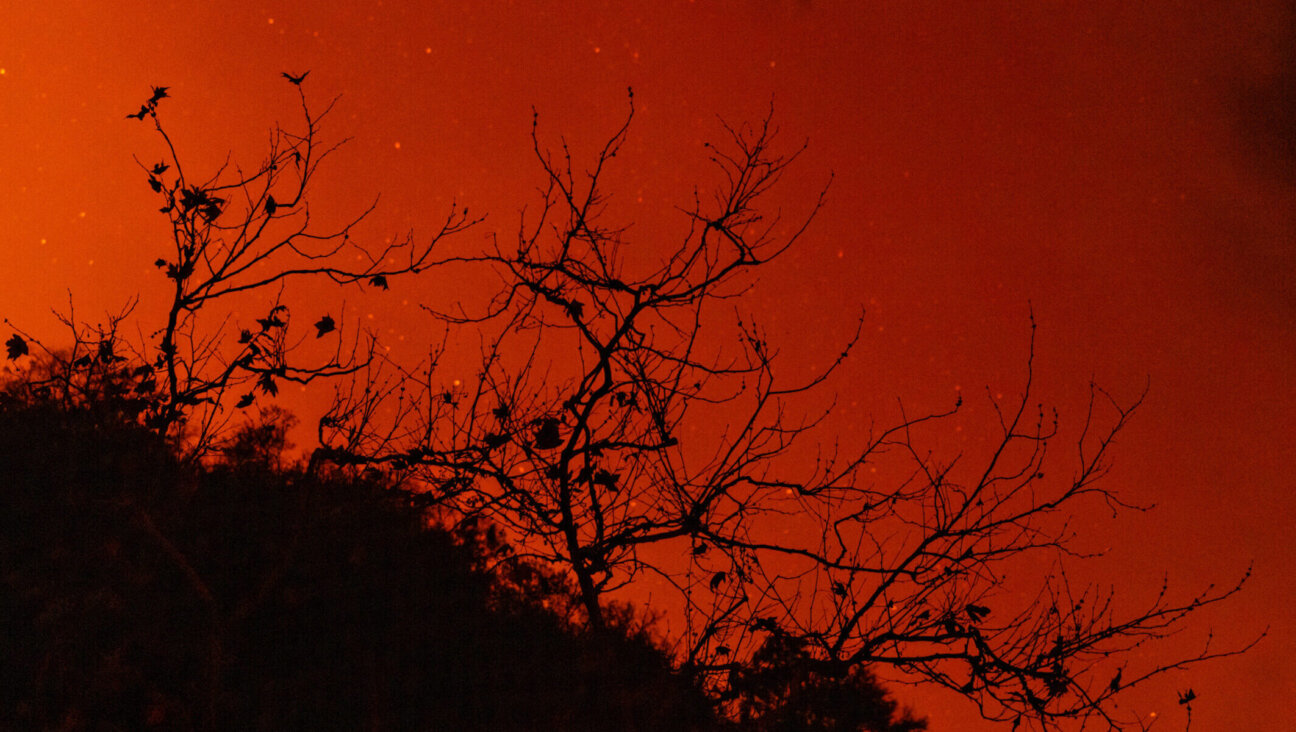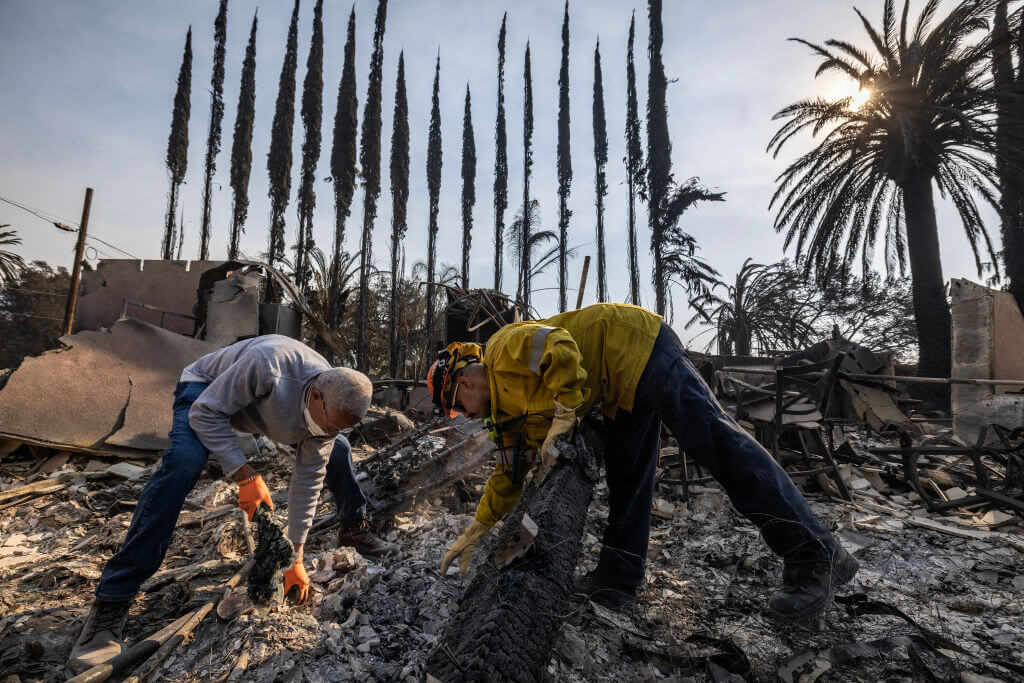Hakoah Vienna: 100 Years Old and Still Powering On

Poster of Hakoah ball 1936 [Jewish Museum Vienna]
In Vienna, on the night of Saturday, November 7, the Sports Club Hakoah, also known as Hakoah Vienna, held a gala ball to celebrate its 100th anniversary. The evening’s entertainment included a bare-chested acrobat whose midair gyrations, on a swath of purple cloth hung from the ceiling, suggested both the precarious nature of Jews in Vienna and the skills used to pull off this event.
Fittingly, the ball was held at Hakoah’s new Karl Haber Sports & Recreation Center. The center’s completion last year, funded by the Austrian government as part of the 2001 “Washington Agreement,” figures in the ongoing reckoning between Jews and non-Jews in Austria today. Steps away from the sports center is a new secondary school, Zwi Perez Chajes Schule, which offers Hebrew and Judaic studies in addition to a standard Austrian curriculum. Also within the complex is a nearly finished building with assisted-living units for the elderly. All three organizations are open to non-Jews.
Historic footage was projected on a giant screen: the Hakoah Vienna athletes who dominated the European amateur scene in the 1920s and ’30s; the club’s legendary soccer team, which toured London in 1923, beating West Ham United, 5-1, and regularly attracted crowds of 25,000 fans. We saw photos of wrestler Nicholas “Micky” Hirschl, who won two gold medals at the 1932 Olympics, and the three brave women swimmers — Judith Deutsch, Lucie Goldner and Ruth Langer — who were among the few Jewish athletes to boycott the then-controversial Berlin Olympics.
Among the dignitaries who addressed the several hundred ball guests were Austrian President Heinz Fischer, Vienna Mayor Michael Haupl and Ariel Muzicant, president of the Jewish community. This official validation was a long way from the exclusionary atmosphere that caused Hakoah to be founded in 1909. Hakoah (Hebrew for “The Strength”) was a response to the Aryan clause, which allowed athletic clubs to ban Jews, and also an embodiment of what Zionist physician Max Nordau called “muscular Judaism.” Hakoah Vienna continued to be a vital social and cultural center for its 6,000 members until the Nazis confiscated the club in 1938.
Also celebrating the centennial is a newly published anthology, “More Than a Sports Club: Hakoah Vienna 1909–2009,” edited by Susanne Helene Betz, Monika Loescher and Pia Schoelnberger, historians at the University of Vienna. As Loescher remarked, “It’s the first book about Hakoah that’s written from an analytic historical stance rather than culled from the club members’ memories.”
Does the Hakoah centennial celebration herald a Jewish revival in Vienna?
This question invariably invokes comparisons with the past. In their early 20th-century Freudian splendor, Vienna’s Jews numbered 200,000 and were integrated into every aspect of Viennese life. Today they number about 14,000. According to Hakoah’s president, Paul Haber, about 7,000 are affiliated and another 7,000 are nonaffiliated, mostly Jews from the east — Hungary, Romania, Poland, the former Soviet Union — whom he hopes the sports center will help to integrate into the community.

Swimming Upstream: Hakoah President Paul Haber, a 1960s breastroke champion and son of Karl Haber, for whom the new sports center is named. Image by COURTESY OF S.C. HAKOAH WIEN
Today, one cannot be Jewish in Vienna without remembering the Holocaust. Police vigilantly guard every Jewish event, memorial and institution; personal identification is required for entry. Although 10 synagogues exist, they do so against the shadowy backdrop of the 93 prewar synagogues that were destroyed by the Nazis. There are those who whisper that the Austrians “would do it all again if they could.”
Yet, 60 years later, a new, cohesive Jewish community is forming in an Austria that is becoming less exclusionary and more open. Lisa Rosenblatt, an American translator who has lived in Austria for 25 years, said, “Every year, when I visit the States, my uncle asks, ‘How can you live in such an antisemitic place?’” While she acknowledges that antisemitism exists, she ticks off parts of the Austrian constitutional law against Wiederbetaetigung (re-engaging in national socialism). “It’s a crime to raise your arm in salute and say ‘Heil Hitler’ in public. Neo-Nazi groups are officially not allowed to form or operate here,” she said.
Annie Lampl, 92, who lives in Los Angeles, was in Vienna with a delegation of elderly Austrians being honored by the government for the Hakoah centennial. Lampl swam with the champion Hakoah women’s swim team in the 1930s and was featured in the 2004 documentary film, “Watermarks.” “Personally, I never felt antisemitism,” Lampl said. “Neither then or now. Maybe because my maiden name was Wagner,” she said, laughing.
The Austrian climate for Jews is becoming warmer than it once was. The Austrian General Settlement Fund has been duly distributing $210 million of restitution, much of it for stolen property, to victims of national socialism and to their heirs. Archivists are busy cataloging the minutiae of World War II and its aftermath. For example, museums that own “looted art” are tracking down the wayward provenances of each piece. One senses that Austria, by taking such concrete measures, is finally coming to terms with its past.
As a result, in the past decade, several groups have emerged, such as the Jewish students’ group Moadon and Jewish Women’s Network. There is an annual Jewish festival and active chapters of the Israeli peace groups Women in Black and European Jews for a Just Peace.
Despite these indicators of Austrian apology and Jewish revival, Vienna and its Jews retain an awkward tentativeness; born, perhaps, of unfamiliarity and disuse. Even the Jews are unsure how to be Jewish.
Rosenblatt, who is secular, says that many of the educated, well-meaning Austrians she meets assume that she keeps kosher. Never having met a Jewish person, that is the picture they have gathered. Jewish holidays are not part of Austrian culture; they’re as remote to ordinary Austrians as, for example, Persian holidays are to the majority of Americans.
Haber is taking the long view. He’s thinking about what the center will mean several generations hence. He foresees a Jewish revival for the grandchildren of today’s members.
He reminds us that the Jews’ entire history in Vienna has been subject to the preferences of one emperor or another. In the mid-19th century, only about 10,000 Jews lived in Vienna. Then, laws became more favorable: By 1900, the community numbered 150,000. “Vienna is a good city to live in,” Haber said. “Not so big, but big enough —many cultural activities, history, parks.”
Rosenblatt, a master swimmer who competes and coaches for Hakoah, said: “My dream for the new sports center is that it become like the YMCA in the States, where I learned to swim as a kid. A place where anyone can go.”
Karen Propp has published two memoirs and co-edited the anthology “Why I’m Still Married: Women Write Their Hearts Out on Love, Loss, Sex, and Who Does the Dishes” (Hudson Street Press, 2006).
A message from our Publisher & CEO Rachel Fishman Feddersen

I hope you appreciated this article. Before you go, I’d like to ask you to please support the Forward’s award-winning, nonprofit journalism so that we can be prepared for whatever news 2025 brings.
At a time when other newsrooms are closing or cutting back, the Forward has removed its paywall and invested additional resources to report on the ground from Israel and around the U.S. on the impact of the war, rising antisemitism and polarized discourse.
Readers like you make it all possible. Support our work by becoming a Forward Member and connect with our journalism and your community.
— Rachel Fishman Feddersen, Publisher and CEO








